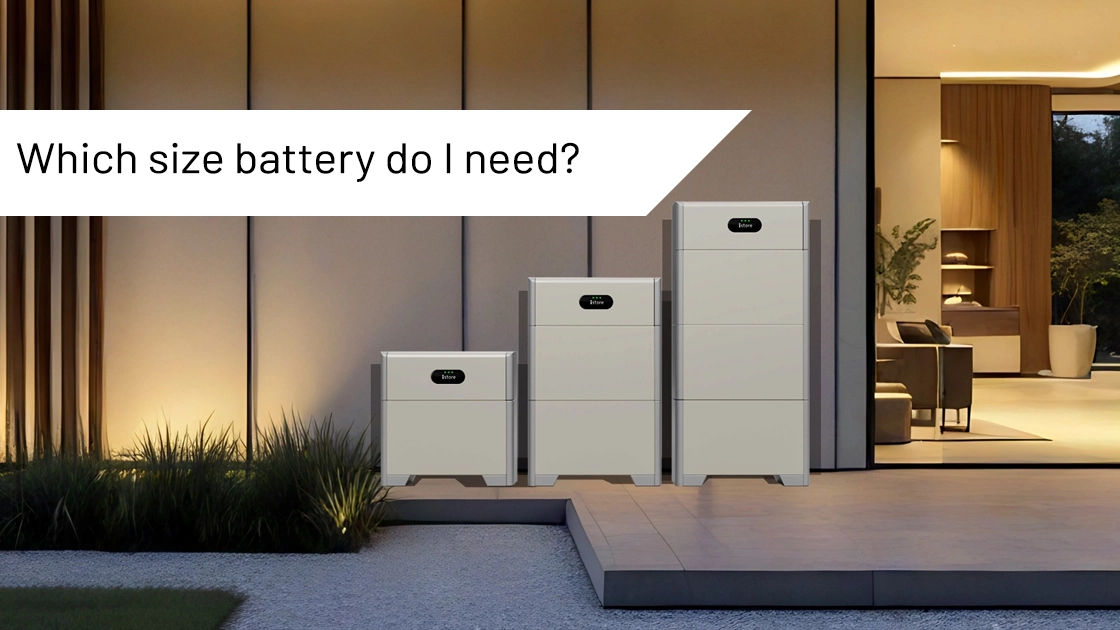
As demand for renewable energy solutions continues to rise, and with new government incentives available, many homeowners are considering solar battery systems to enhance their energy independence and reduce electricity costs. However, one of the most common questions that arise is: What size solar battery should I buy? This blog post will guide you through the essential factors to consider when sizing your solar battery system.
Understanding Your Energy Needs
1. Daily Energy Consumption
The first step in determining the right size for your solar battery is to assess your daily energy consumption. This is typically measured in kilowatt-hours (kWh). You can find this information on your electricity bill, which often provides an average daily usage figure. If your bill does not specify this, you can calculate it by taking your total annual kWh usage and dividing it by 365.
Example Calculation:
If your annual usage is 10,000 kWh, your daily usage would be approximately: Daily Usage=36510,000 kWh≈27.4 kWh

Tip: Check your bills to see how your summer usage varies with your winter usage and use the higher figure to ensure you have enough energy storage year round.
2. Future Proofing: One Time Government 'Battery STC' Rebate
You only have one chance to secure this rebate (per address) - so make it count! A good rule of thumb is to allow an extra 25% on your current energy usage to accommodate for growing families or future purchases on your home electrification journey - think heat pumps, induction cook tops and Electric Vehicles (EVs). If you are making the switch from gas, your electricity consumption will increase which will be offset by using energy efficient electric appliances and by choosing an adequately-sized solar and battery system.

Tip: To future-proof your home energy we recommend allowing at least an extra 25% on top of your current energy usage.
3. Temperature Adjustments
In colder climates, battery performance can decrease, so it’s wise to oversize your battery to account for this. Depending on your local climate, you might need to increase your battery capacity by 10% to 40%.
4. Days of Backup Power
Consider how many days of backup power you want. If you want your system to last through several cloudy days, multiply your daily usage by the number of days you want to be covered.
Example Calculation:
If you want three days of backup:
Total Capacity=Daily Usage×Days of Backup=27.4 kWh×3≈82.2 kWh

Tip: Be sure to ask for 'backup' or 'blackout protection' from your chosen supplier, as this is not offered as standard and many batteries are not capable of providing backup power to the house in the event of a grid outage.
5. Battery degradation
Batteries will degrade over time. A good rule of thumb is to allow for a 30% degradation over 10 years. Therefore if you need 10kWh of usable capacity, you can add another 30% for degradation and 25% for increased household demand making a 15kWh battery with 100% Depth of Discharge (DoD) a good choice.
6. Depth of Discharge (DoD)
Once you know your usable battery capacity requirement, the next factor to consider is the Depth of Discharge (DoD) of the battery. This refers to the percentage of the battery that can be used before it needs to be recharged. Different battery types have different DoD ratings:
Lead-acid batteries: Typically rated for 50% to 80% DoD.
Lithium-ion batteries: Generally rated for about 80% DoD.
To calculate the required battery capacity, you can use the following formula:
Required Battery Capacity (kWh)=DoD Daily Usage (kWh)
Example Calculation:
If your daily usage is 27.4 kWh and you are using a lithium-ion battery with an 80% DoD:
Required Capacity=0.827.4 kWh≈34.25 kWh

Tip: We recommend the iStore batteries that have 100% DoD available from 5kWh to 60kWh.
Solar and Battery Savings
Purchasing a solar energy and battery system will save you money as well as contributing to a more sustainable future for our children. The table below illustrates some common scenarios and estimated savings based on 50% daily consumption.
System Size Annual Savings 6.6kW Solar panels & 10kWh Battery $2,208 10kW Solar panels & 15kWh Battery $3,156 13.3kW Solar panels & 20kWh Battery $4,188 19.8kW Solar panels & 30kWh Battery $6,276
When selecting a battery, consider the following:
Battery Type: Lithium-ion batteries are more efficient and have a longer lifespan compared to lead-acid batteries, but they are also more expensive.
Scalability: Some systems allow you to add more batteries later, which can be beneficial if your energy needs change.
Brand and Warranty: Look for reputable brands that offer good warranties, as this can be an indicator of reliability and performance.
Quality and Affordability: It is tempting to choose the cheapest battery on the market. However please remember that cheaper isn't always better. You need energy storage that is reliable, has been proven in the market and backed by local support when you need it.

Tip: iStore currently has a limited-time offer of a free 2 year warranty extension via their local Australia-based support team. It is also one of the most reliable in the market as the Australian OEM manufacturer for Huawei - one of most technologically advanced companies with historically one of the lowest failure rates in Australia.
Conclusion
Choosing the right size solar battery is crucial for maximising the benefits of your solar energy system. By understanding your energy needs, future-proofing with the once-only structure of the government battery STC rebate, considering the depth of discharge, and accounting for additional factors like temperature and backup days, you can make an informed decision.
If you're unsure, consulting with a solar energy professional can provide tailored advice to meet your specific requirements. Investing in the right solar battery not only enhances your energy independence but also contributes to a more sustainable future.
Request a quote!



